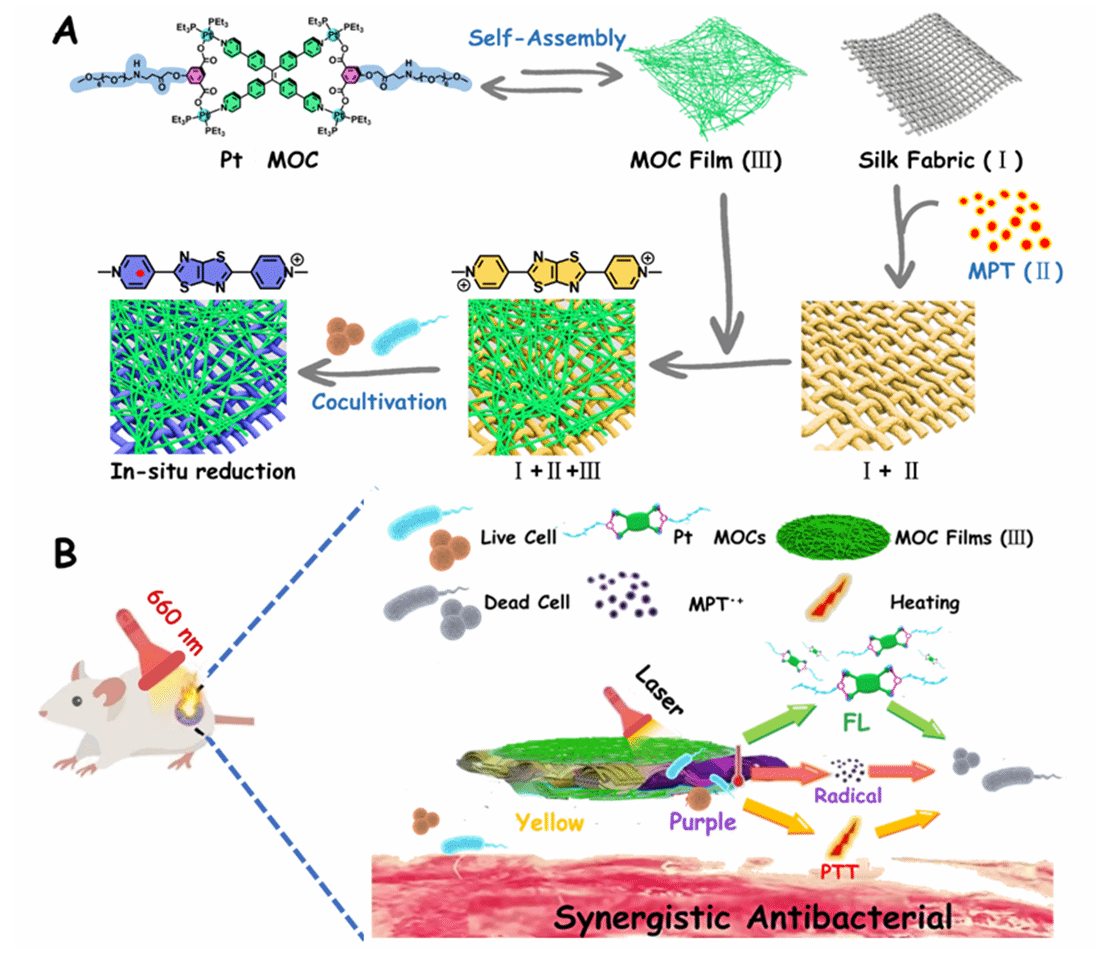Publisher: School of Chemistry and Chemical Engineering Editor: Chen Machuan
WUST News Recently, Associate Professor Wang Xiaoqiang from the School of Chemistry and Chemical Engineering of WUST, Professor Sun Yao from Central China Normal University, Academician Peter J. Stang from The University of Utah, and Prof. Sun Yan from Henan University jointly published a high-level paper in the Proceedings of the National Academy of Sciences (PNAS). The co-first authors of the paper include doctoral student Li Wenzhen, Associate Professor Wang Xiaoqiang from the WUST, and master student Liu Lingran from Henan University. This is the first time that the WUST has published an article in this journal.
Metal-organic cycles/cages (MOCs) have attracted attention as a potential alternative to antibacterial materials due to their excellent antibacterial properties. Nanoscale MOCs, however, have been limited in their practical applications due to their difficulty in processing and transporting. Researchers led by Wang Xiaoqiang have developed a novel wound dressing with real-time infection indication and high spatiotemporal precision (Figure 1). The wound dressing utilizes a multi-level self-assembled centimeter-scale Pt-based MOC film (III) combined innovatively with silk fabric (I+II) dyed with cationic dye (MPT) (Figure 1A), enabling appropriate application of the Pt-based MOC film at a macroscopic scale and effectively controlling therapeutic output. The cationic dye MPT on silk fabric undergoes a noticeable color change (from light yellow to dark purple) when co-cultured with bacteria, indicating its in-situ reduction to its free radical form and enabling real-time monitoring of wound infection (with a significant color change occurring within two hours). Furthermore, under 660nm laser irradiation, the MPT free radical exhibits excellent photothermal properties, which induce and control the multilevel assembly structure decomposition of the Pt-based MOC film, effectively enhancing antibacterial efficiency and promoting rapid healing of infected wounds (Figure 1B). This work provides a new idea for the macroscopic practical application, real-time monitoring of bacteria, and promotion of wound healing using centimeter-scale metal-organic cycles/cages (MOCs) material.

Figure 1 shows the preparation of multilevel self-assembled centimeter-scale Pt-based MOC membranes, construction of multilayer wound dressings (I+II+III) responsive to bacteria, and photothermal synergistic antibacterial properties.
This research was supported by the National Natural Science Foundation of China (51903195, 22372055), Hubei Talent Plan (2019), and Hubei Key Laboratory for Coal Conversion and New Carbon Materials (WKDM202401).
PNAS, the Proceedings of the National Academy of Sciences of the United States of America, is a prestigious interdisciplinary scientific journal that has been published since 1914. As one of the world's foremost "century-old renowned journals" and one of the four leading international journals (alongside Nature, Science, and Cell), PNAS is published as a weekly journal and covers a range of topics including medicine, chemistry, biology, physics, atmospheric science, ecology, and social sciences. (School of Chemistry and Chemical Engineering of the WUST)
URL: https://www.pnas.org/doi/10.1073/pnas.2318391121